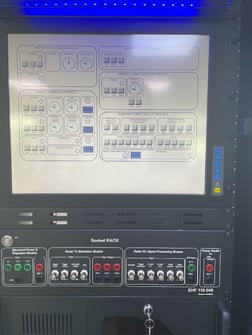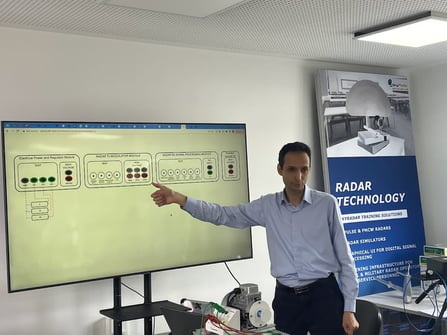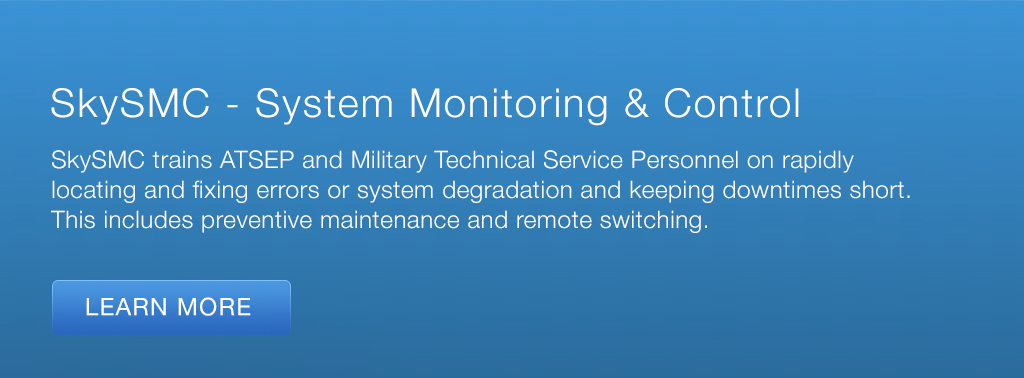Processing errors in AI analytics within air traffic control can jeopardize system accuracy, safety, and efficiency. This article explores causes, impacts, and remedies, emphasizing the need for rigorous testing and human oversight to mitigate risks.
The Background
Processing errors related to AI analytics in air traffic control can have a significant impact on safety, efficiency, and accuracy of the system. Errors can result in incorrect decisions, delays, or even accidents, highlighting the importance of ensuring the reliability and validity of AI systems.
Artificial intelligence (AI) analytics has become an increasingly important tool in the aviation industry, particularly in the field of air traffic control (ATC) services. AI analytics can help ATC personnel to process and analyze large amounts of data quickly and accurately, allowing them to make informed decisions and respond to changing conditions in real-time. However, the use of AI analytics can also introduce processing errors that can have a significant impact on ATC services, potentially leading to safety incidents, flight delays, and other disruptions. In this article, we will explore the impact of processing errors due to AI analytics in ATC services, including their causes, effects, and potential solutions.
Definition of processing errors due to AI Analytics
Processing errors due to AI analytics refer to errors that occur in the processing and analysis of data using AI algorithms or tools. These errors can occur due to a variety of factors, including data quality issues, algorithmic biases, software bugs, and human error. Processing errors can lead to incorrect or incomplete information being provided to ATC personnel, which can result in safety incidents, flight delays, or other disruptions.
What is AI Analytics?
AI analytics is a branch of artificial intelligence that focuses on the use of algorithms and statistical models to analyze and interpret data. In the context of ATC services, AI analytics can be used to process large amounts of data from a variety of sources, including radar systems, weather sensors and flight tracking systems. This data can be used to monitor and manage air traffic, detect potential safety hazards and provide real-time information to ATC personnel.
Example related to ATSEP and Air Traffic Control Service
One example of AI analytics in ATC services is the use of machine learning algorithms to predict and prevent runway incursions. Runway incursions occur when an aircraft enters an active runway without permission posing a significant safety risk to other aircraft and personnel on the ground. To prevent runway incursions ATC personnel can use machine learning algorithms to analyze data from radar systems, aircraft tracking systems and other sources to identify potential incursions before they occur. This data can then be used to alert ATC personnel who can take action to prevent the incursion.
Scenario that illustrates impact of Processing error related to AI Analytics on Air traffic Control Services
Imagine an air traffic control system that utilizes AI analytics to predict and manage traffic flow. The AI analytics system receives data from various sources including radar, weather reports and flight plans. However due to a processing error the system misinterprets the radar data and incorrectly identifies the position of an incoming aircraft. The air traffic controller relying on the AI analytics system for guidance directs the aircraft to descend to an altitude that conflicts with another aircraft's flight path. As a result the two aircraft come dangerously close to each other and the air traffic controller must take immediate action to avoid a collision.
This scenario illustrates the potential impact of processing errors related to AI analytics on air traffic control services. Inaccurate data interpretation can lead to incorrect decision-making, jeopardizing the safety of passengers and crew. ATC personnel must be aware of the limitations and potential errors associated with AI analytics systems, and implement measures to detect and correct any processing errors that may occur. Regular training, quality assurance evaluations and feedback mechanisms can help to prevent such errors and ensure the safety of air travel.
Impact of processing errors related to AI Analytics on Air Traffic Control Services
Processing errors related to AI analytics in air traffic control services can have a significant impact on flight safety. AI systems are designed to analyze vast amounts of data and provide insights to air traffic controllers. However if the system misinterprets or miscalculates the data it can lead to incorrect decision-making.
For example if an AI analytics system misidentifies the position of an aircraft it could result in a collision with another aircraft or an object in its path. Similarly if the system misinterprets weather data it could lead to an incorrect decision to reroute aircraft causing delays and potential safety issues.
Moreover if air traffic controllers rely solely on the output of the AI system without verifying the accuracy of the information it could lead to cascading errors with subsequent decision-making based on incorrect or incomplete information. This could lead to chaos in the airspace and cause significant delays putting the safety of passengers and crew at risk.
Therefore it is essential to ensure that AI systems are thoroughly tested and validated to minimize the potential for processing errors. Regular training and quality assurance evaluations for air traffic controllers can also help to detect and rectify any errors that may occur. Additionally it is critical to have fail-safe mechanisms in place such as backup systems and contingency plans to ensure safe and efficient air traffic control services.
Steps to be taken by ATSEP in Rectification of Processing errors related to AI Analytics in detail
When processing errors occur due to AI analytics in air traffic control systems it is critical for ATSEP to take prompt action to rectify the issue and prevent any potential safety hazards.
The following steps can be taken by ATSEP to rectify processing errors related to AI analytics
Identify the root cause of the processing error
The first step in rectifying a processing error related to AI analytics is to identify the root cause of the issue. This may involve reviewing system logs and analyzing data to determine the source of the error.
Develop a plan to rectify the issue
Once the root cause of the processing error has been identified ATSEP should develop a plan to rectify the issue. This may involve modifying system settings updating software or hardware components or implementing new processes and procedures.
Implement the plan
After developing a plan to rectify the processing error ATSEP should implement the plan in a controlled and systematic manner. This may involve testing the system in a simulated environment before deploying the changes to the live system.
Monitor the system
After implementing the changes to rectify the processing error ATSEP should closely monitor the system to ensure that the issue has been resolved and that there are no additional errors or safety hazards.
Steps to be followed by ATSEP for preventing AI Analytics in detail
Preventing processing errors related to AI analytics in air traffic control systems is critical to ensuring the safety and efficiency of the airspace.
The following steps can be followed by ATSEP to prevent AI analytics processing errors:
Conduct thorough testing and validation
Before deploying an AI analytics system in a live air traffic control environment it is critical to conduct thorough testing and validation to ensure that the system is functioning as intended and that there are no potential safety hazards.
Regularly update software and hardware components
To prevent processing errors related to AI analytics ATSEP should regularly update software and hardware components to ensure that the system is up-to-date and functioning properly.
Implement redundancy and backup systems
To minimize the impact of any processing errors that may occur ATSEP should implement redundancy and backup systems that can quickly take over in the event of an error or system failure.
Provide ongoing training and education
To ensure that air traffic controllers and other personnel are able to effectively operate and maintain AI analytics systems ATSEP should provide ongoing training and education to keep them up-to-date on the latest technology and procedures.
Factors Responsible for AI Analytics related Processing errors
There are several factors that can contribute to processing errors related to AI analytics in air traffic control systems. These include
Incomplete or inaccurate data
AI analytics systems rely on large amounts of data to make predictions and decisions. However if the data used to train the AI system is incomplete or inaccurate the output generated by the system will also be incomplete or inaccurate. For example if an AI system used for predicting weather patterns is trained on incomplete or inaccurate data it may make incorrect predictions leading to potentially dangerous situations. In context of air traffic control services we all know that our Air traffic control services rely heavily on accurate and timely data to make critical decisions. However if the data used to train AI systems in air traffic control services is incomplete or inaccurate it can lead to errors and potentially hazardous situations. For instance if an AI system used for predicting aircraft trajectories is trained on incomplete or inaccurate data it may generate incorrect predictions leading to potential collisions or near misses. Therefore it is crucial to ensure that AI systems in air traffic control services are trained on complete and accurate data to avoid any safety hazards.
Data bias
The AI systems used in air traffic control rely on vast amounts of data to make informed decisions about flight patterns and schedules. However if the training data used to develop these AI systems is biased it could lead to inaccurate decisions being made that affect the safety of air traffic.
For example if the training data is biased towards certain airlines or airports it could result in preferential treatment being given to those entities. This could lead to unequal distribution of air traffic causing congestion in some areas while leaving others underutilized.
Moreover biased data can also lead to inaccurate predictions about weather patterns, air traffic volume and other factors that affect air traffic control services. This can result in delays cancellations and even accidents if incorrect decisions are made based on flawed data.
To mitigate data bias in air traffic control services it's crucial to ensure that the training data used to develop AI systems is diverse and representative of all airlines, airports and demographics. This can help to ensure that decisions made by the AI systems are fair and unbiased leading to safer and more efficient air traffic control services.
Overreliance on AI
While AI can be a useful tool for decision-making it is important to remember that it is still a machine and can make mistakes. Overreliance on AI systems can lead to critical errors in decision-making as well as a lack of human oversight and intervention.
Inadequate testing and validation
AI systems should undergo rigorous testing and validation to ensure their accuracy and reliability. However inadequate testing and validation can lead to errors and inaccuracies in the output generated by the system.
Lack of transparency
In some cases AI systems may be viewed as "black boxes" where the inputs and outputs are not easily understandable or transparent to the user. This lack of transparency can make it difficult for users to understand how the system is making decisions and whether those decisions are accurate and fair.
Some common types of processing errors caused by AI analytics include misclassification of data incorrect predictions and biased results. Misclassification of data occurs when the AI system assigns data to the wrong category or label leading to incorrect results. Incorrect predictions occur when the AI system makes inaccurate predictions based on the input data. Biased results occur when the AI system generates results that are biased towards certain groups or demographics leading to discrimination.
The impact of AI analytics related processing errors can be significant in ATC. For example if an AI system used for predicting air traffic patterns generates incorrect predictions it could lead to traffic congestion delays and potential safety hazards. In some cases the impact of AI errors in ATC could even be life-threatening.
Some research highlights related to processing errors in AI analytics systems in air traffic control include
A study conducted by Eurocontrol found that errors in AI systems can occur due to issues with data quality human factors and software errors. The study also highlighted the importance of monitoring and validating the output of AI systems to detect errors and ensure safety.
Another study published in the Journal of Air Transport Management suggested that while AI systems can improve safety and efficiency in air traffic control they also pose unique risks due to their complexity and potential for errors. The study recommended that AI systems be subject to thorough testing and validation to ensure their safety and reliability.
A research paper published in the Journal of Air Traffic Control in 2021 proposed a framework for managing the risks of AI systems in air traffic control. The framework includes risk identification risk analysis risk mitigation and risk monitoring and emphasizes the need for continuous monitoring and testing of AI systems to ensure safety.
SkyRadar's System Monitoring & Control Solution
SkySMC - SkyRadar’s System Monitoring and Control Suite is a pedagogically enhanced, fully operational monitoring & control tool. We have optimized it to cater for the ATSEP-SMC training compliant to EASA's Easy Access Rules for ATM-ANS (Regulation (EU) 2017/373) and ICAO Doc 10057.
SkyRadar provides SkySMC as a complete laboratory in a turn-key approach, or as a service.
SkySMC is not a simulator, but a fully operational open monitoring system. It comes by default with a server including various virtualized applications and virtualized servers, but also connects to simulated systems. In addition, there are various hardware extensions available including training infrastructures, monitorable training radars, or even complete ATM systems, all connected to the System Monitoring & Control solution. Most components such as the radars, it IT infrastructure or networks exist in hardware and software (virtualized or simulated). The two photos above show the same socket panel in real hardware and in the simulator (fully functioning).
SkyRadar's System Monitoring & Control training system can be easily blended into distance learning solutions.
Let's talk
Stay tuned to be always the first to learn about new use cases and training solutions in ATSEP qualification (real radars or simulators).
Or simply talk to us to discuss your training solution.
References
- "Artificial Intelligence and Machine Learning in Air Traffic Management" (EUROCONTROL, 2020).
- "Potential safety impact of applying machine learning and artificial intelligence techniques in aviation" (European Union Aviation Safety Agency, 2020).
- "The Seven Deadly Sins of AI Predictions" (MIT Technology Review, 2017).






